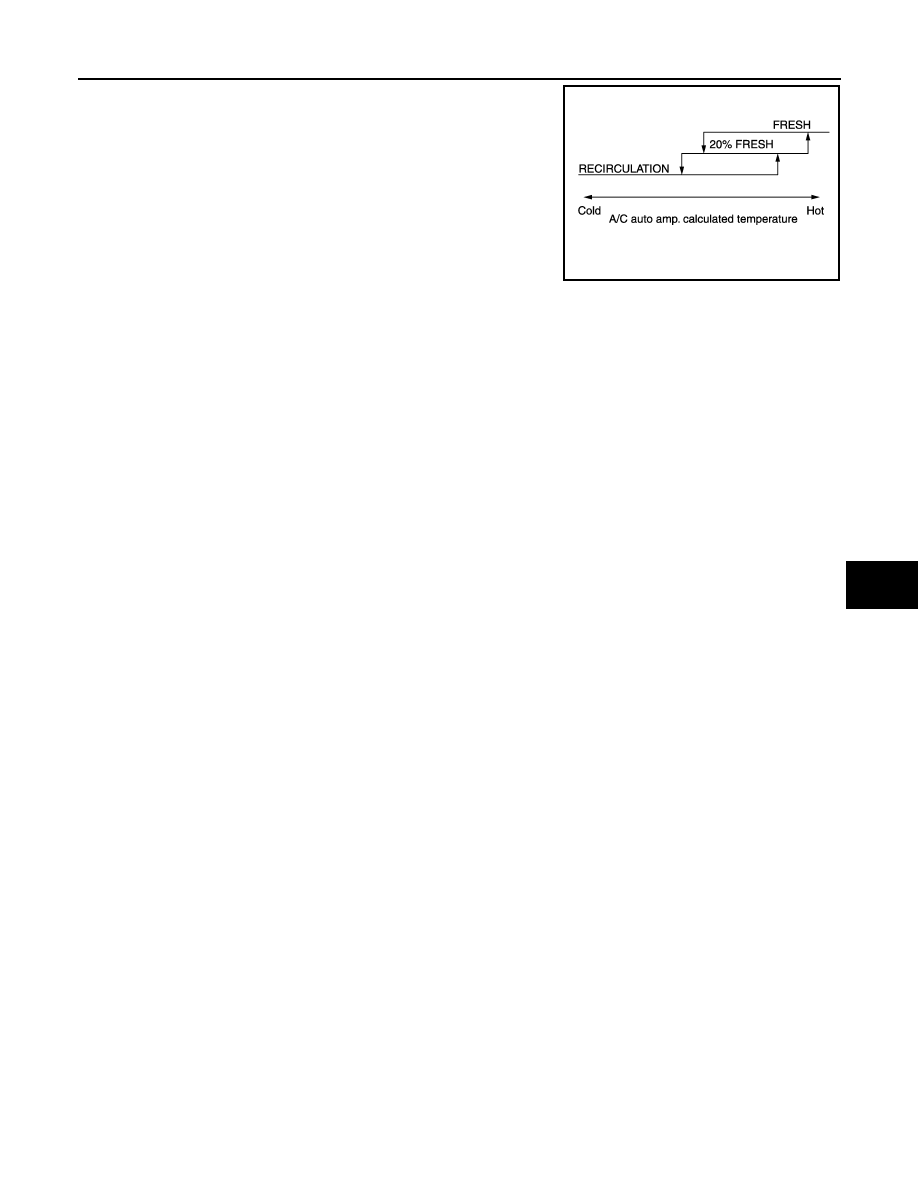Nissan Teana J32. Manual - part 666

INTAKE DOOR CONTROL SYSTEM
HAC-33
< FUNCTION DIAGNOSIS >
[WITHOUT 7 INCH DISPLAY]
C
D
E
F
G
H
J
K
L
M
A
B
HAC
N
O
P
• Intake door position is basically set to the FRE when the FRE indi-
cator is ON or DEF switch is ON.
• Intake door position is basically set to the REC when the REC indi-
cator is ON.
• The intake door automatic control selects the FRE, the 20% FRE,
or the REC depending on the target air mix door opening angle,
based on in-vehicle temperature, ambient temperature, and sun-
load.
JPIIA0634GB